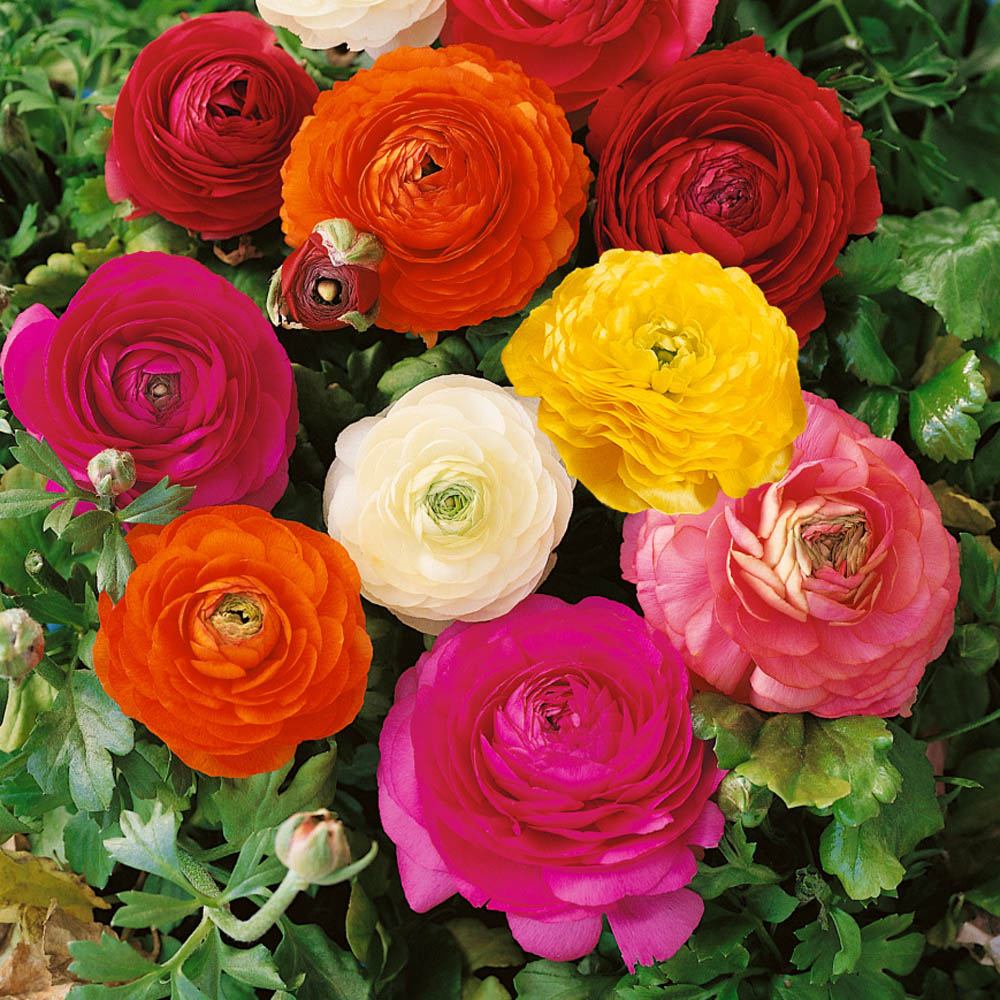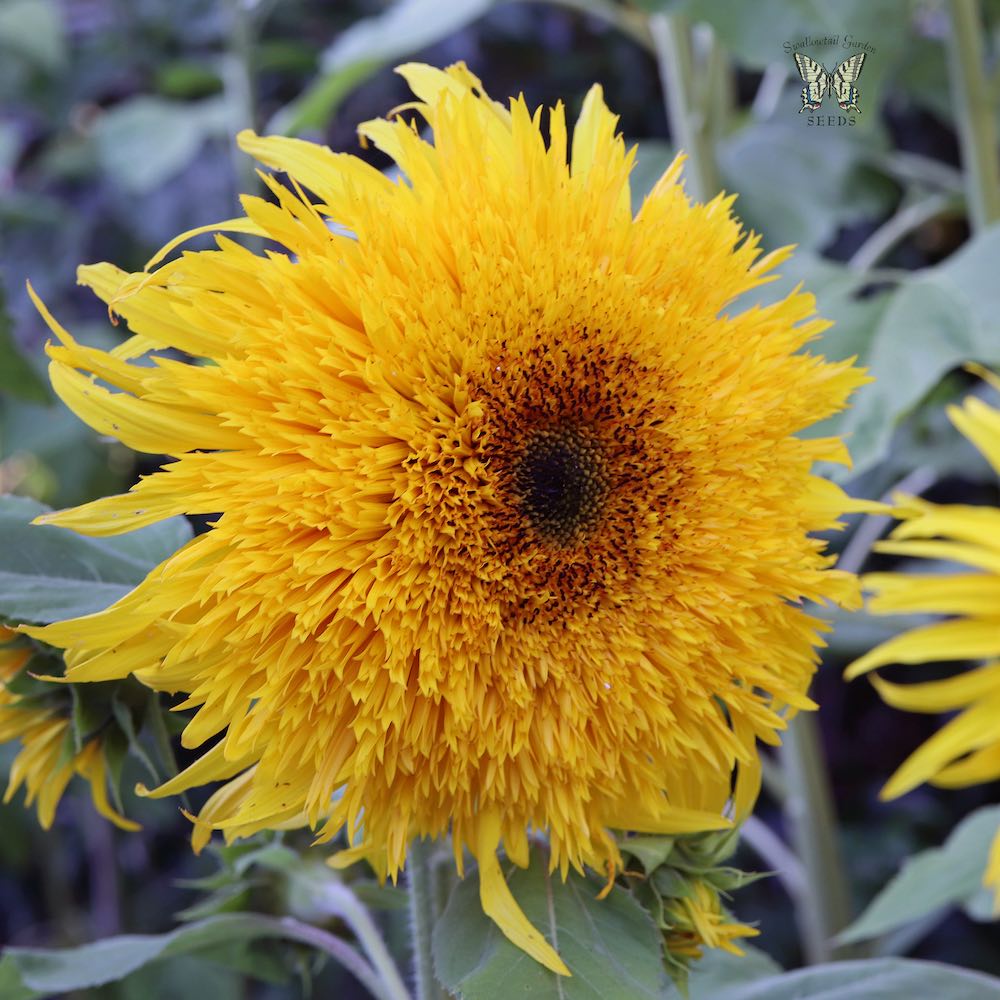Posted by Calif_Sue
Description Ranunculus Elegance Viola, with its deep purple to maroon color is dramatic, elegant and mysterious! It won a coveted Blue Ribbon at SAF'S 2019 Oustanding Variety Competition! Ranunculus, also called Persian Buttercups, have papery textured flowers with layer upon layer of light and airy petals. Mistral Anemone; Each anemone flower is an absolute eye catcher! Just like the Ranunculus, we stumbled upon a new line of Italian Ranunculus called, Mistral Anemone. Incredible large flowers and available is an abundance of colors; from pure white with a black heart (Mistral Plus Bianco Centro Nero) to different shades of pink, blue, flamed red, blushed cyclamen, purple and even an almost.
Brilliantly colored flowers are 'ranunculus' chief attraction, and they are indeed special. They most often come in multiple layers of delicate, crepe paper--thin petals, looking like an origami masterwork. Ranunculus (R. asiaticus) excel in southern and western gardens, and make terrific container plants everywhere. They also make long-lasting cut flowers. Bulbs are widely available in Fall at retail nurseries in mild-winter climates; in Fall and early spring from mail-order catalogs.
Ranunculus leaves, grass green and vaguely celery-like, grow in a mound 6 to 12 inches across. Flowers on 12- to 18-inch stems emerge in March from fall-planted bulbs, June and July from spring-planted bulbs; they last up to six weeks. On the most common type, the Tecolote strain, flowers are mostly fully double, 3 to 6 inches wide, and available in bicolored picotee, gold, pastel mix, pink, red, rose, salmon, sunset orange, white, and yellow. The less common Bloomingdale strain is shorter, to 10 inches, with pale orange, pink, red, yellow, and white double flowers.
Where and How Ranunculus Grow BestBroadly speaking, ranunculus are frost-hardy cool-season perennials. They perform best where winters are relatively mild and springs are long and cool. The roots tolerate soil temperatures to 10°F, while growing plants can handle temperatures below 20°F for several hours.
Ranunculus are most popular in the mild-winter regions of the South and West, in states such as California, Nevada, Arizona, New Mexico, Texas, and Louisiana (USDA Hardiness Zones 8 through 11), where they grow best. Planted there in October or November, they flower in March.
The clawlike bulbs, more correctly tubers, come in four grades or sizes. The largest, called jumbos, are the ones you should rely upon; they are at least 7 to 8 centimeters (2-3/4 to 3-1/8 inches) in circumference, or about 7/8 inch in diameter. Number one tubers are slightly smaller, 6 to 7 centimeters (2-1/4 to 2-3/4 inches); number twos are 5 to 6 centimeters (2 to 2-1/4 inches); and number threes, which are rare at retail, are 3 to 4 centimeters (1-1/8 to 2-1/4 inches).
Bulb size predicts the number of flowers. Each jumbo bulb will produce some 35 cuttable flowers, compared to a fifth as many from a number three bulb. Number ones will make about 20 flowers, number twos a dozen or more. Stick to jumbos for containers and most smaller plantings. Smaller number twos or even threes serve well for mass plantings.
At retail nurseries this fall, you can expect to pay about 50 cents for each jumbo bulb, 25 cents for number twos. Increasingly, nurseries also offer ranunculus in fall or spring as bedding plants in 4-inch pots. While the cost per bulb in pots is greater, this is a good option if you need only a few plants for a container.
Gardeners in zone 7 and north (Richmond and Reno to Minneapolis) can also grow ranunculus, but on a different schedule. In these regions, plant in early spring a week or two before the typical last frost.

Or, plant them in pots indoors in February for transplanting later. Place pots in a south- or west-facing window or under grow lights. Temperatures around 55°F are ideal. In early spring, gradually acclimate plants to outdoors by putting them out for more time each day (bring them in at night). Plant outdoors by mid-April in zones 6 and 7 (mid-May in zones 4 and 5). Spring-planted ranunculus will bloom in June or July.
Planting Ranunculus
Dry and hard when you buy them, tubers soften and plump up after absorbing moisture. You might be advised elsewhere to soak tubers before planting. It's not necessary, and if you happen to leave them in water too long, they'll turn to mush.
Choose a location in full sun and be sure the soil is well drained. The one environment that ranunculus do not tolerate is warm and wet. The cool soil of fall and early spring offers some protection from rotting, but soil that is never soggy gives extra insurance. Plant the tuber's claw pointed end down and 1 to 2 inches deep, less in clay soil. Space jumbos 8 to 12 inches apart (at least one tuber per square foot), number three tubers about 4 inches apart (two or three per square foot).

Ranunculus adapt easily to container life, but they do produce a large root system. A 10-inch pot can fit one or two jumbos or three number twos.
Whether tubers are in the garden or in pots, water thoroughly after planting, and apply a mulch of your choice: bark, coco hulls, and straw all work well. As long as soil retains some moisture, don't water again until you see sprouts, usually within 15 to 20 days.
Companion plants. Because ranunculus are cool-season bloomers, their natural companions include other cool-season flowers such as snapdragon (Antirrhinum), calendula, larkspur (Consolida ambigua), Chinese forget-me-not (Cynoglossum amabile), African daisy (Arctotis), candytuft (Iberis), sweet pea (Lathyrus odoratus), toadflax (Linaria), forget-me-not (Myosotis), Iceland poppy (Papaver nudicaule), primrose (Primula), and pansy (Viola). The question is how to combine colors.
Here are two ranunculus color schemes that have proven popular. Interplant pink ranunculus with salmon Iceland poppy and red-purple pansies, and accent with a few yellow and pink English primroses. Another favorite scheme combines salmon ranunculus with blue Chinese forget-me-not.
Ranunculus from seed. If you can locate seed for sale or through a swap, they're definitely worth the effort. Sow in a lightweight, peat-based seed-starting mix in late winter, maintain soil temperature at 50°F, and allow 20 to 30 days for germination. Sow thickly, because the number of seeds that actually grow is low. After germination, maintain seedlings indoors at about 55°F until outdoor planting time. Plants will flower by June.
As cut flowers. Beyond their intrinsic beauty, ranunculus flowers have another virtue: they last indoors about 7 days after cutting. And at about a penny-and-a-half per flower, they are very inexpensive. Cut when flowers first show color, in the early morning after they have had the night to recharge themselves with moisture. For an additional day or two of vase life, add any floral preservative to the water.
After the flowers fade. For some lucky gardeners with perfectly drained, cool soil, the tubers can stay in place and be treated like any perennial that comes back year after year. But this is rare. Most gardeners treat ranunculus as annuals, disposing of them after bloom. You could pull and compost plants, or leave them in place to fade away. In most gardens, the tubers will rot in moist summer soils. More ambitious gardeners can save the tubers for replanting next year. Let blooms fade and plants dry out. Lift tubers, cut off tops, and store in a dry, cool place for planting next year.
Alstroemeria Violacea
Michael MacCaskey is a former editorial director at National Gardening.
Ranunculus Viola

Ranunculus Violet Bicolor
Articles→Plants→Flowers→Bulbs
Articles→Plants→Flowers→Perennials
Articles→Plants→Flowers→Annuals→Poppies
